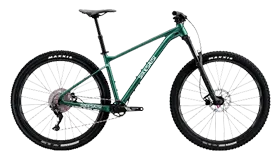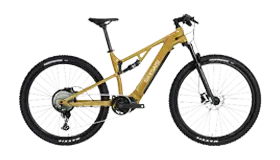eMTB vs MTB: Which is Best for You?

The world of mountain biking is vast, offering a diverse range of experiences and challenges. Two prominent categories, eMTB (electric mountain bikes) and MTB (traditional mountain bikes), attract riders with different needs and preferences. Choosing the right bike can be daunting, so let's dive into the differences between eMTB and MTB to help you determine which is best for you.

-
1. What type of riding do you plan to do?- 1. Commuting: A reliable, comfortable bike with good range is key. Consider a city bike with a mid-drive motor for hill climbing.
- 2. Recreation: Trail riding, mountain biking, or cruising around town? Choose a bike designed for your terrain.
- 3. Fitness: If you're using it for exercise, a pedal-assist bike with a lower-power motor will keep you engaged.
2. What's your budget?- 1. Entry-level: Around $1000-1500, good for commuting or casual riding.
- 2. Mid-range: $1500-3000, offers more features like better motors, suspension, and longer range.
- 3. High-end: $3000+, focuses on performance and durability, ideal for serious riders and those with specific needs.
3. Key Considerations:- 1. Motor type: Mid-drive motors provide natural pedal assistance, while hub motors are simpler and more affordable.
- 2. Battery range: How far do you need to go on a single charge? This depends on your riding style, terrain, and battery capacity.
- 3. Power output: Measured in watts (W), higher power is better for hills and heavier riders.
- 4. Gears: Multiple gears provide flexibility for different terrains.
- 5. Brakes: Hydraulic disc brakes offer superior stopping power, especially for heavy bikes.
- 6. Weight: Heavier bikes can be more tiring to ride, even with assistance.
- 7. Suspension: Essential for rough terrain or comfortable commuting.
4. Additional Features:- 1. Display: Shows your speed, battery level, and other information.
- 2. Lights: Essential for safety, especially at night.
- 3. Fenders: Keep you clean and dry in wet conditions.
- 4. Racks and panniers: For carrying cargo.
5. Safety:- 1. Wear a helmet!
- 2. Be aware of your surroundings and traffic.
- 3. Practice riding in different conditions before heading out on long journeys.
6. Maintenance:- 1. Electric bikes require regular maintenance, especially the battery and 2. motor.
- 3. Check the tire pressure, brakes, and chain regularly.
- 4. Follow the manufacturer's instructions for cleaning and care.
7. Before you buy:- 1. Test ride: Get a feel for the bike and how it handles.
- 2. Read reviews: See what other riders have to say about the bike.
- 3. Compare prices: Find the best deal for your needs.
- 4. Ask questions: Don't hesitate to ask the shop staff for advice.
8. E-cycles vs. Electric Bikes:- 1. E-cycle: More affordable, lighter, and often smaller. Ideal for short commutes or casual riding.
- 2. Electric bike: More versatile, powerful, and comfortable for longer rides or tougher terrain.
Remember, choosing the right electric bike is a personal decision. Consider your individual needs, budget, and riding style to find the perfect fit.










